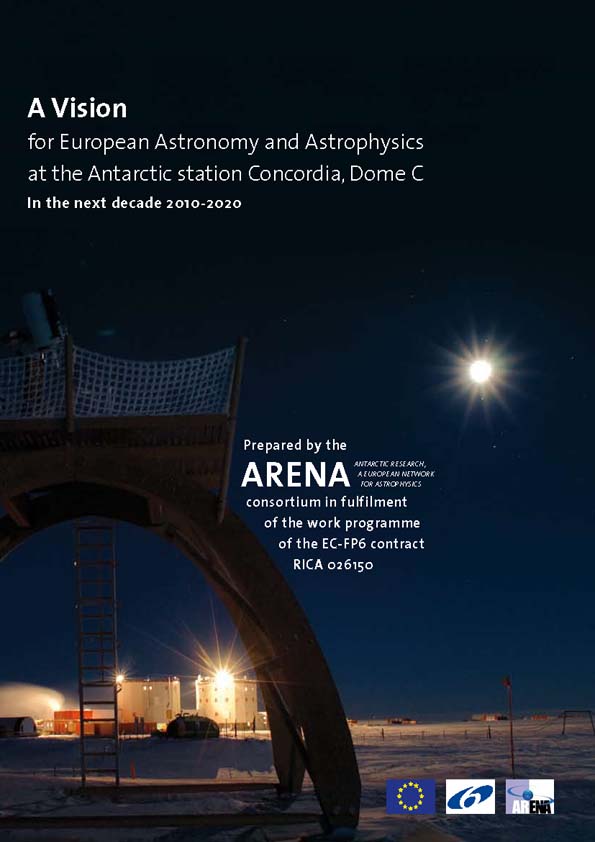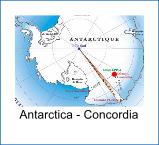
The ARENA network has released, in February 2010, its ?Vision for European Astronomy and Astrophysics at the Antarctic station Concordia/Dome C in the next decade?, a 100 page booklet outlining a roadmap for the establishment of an astronomical observatory at the Franco-Italian station of Concordia at Dome C, Antarctica.
http://arena.unice.fr/IMG/pdf/100126_ARENA_EUROPEAN_VISION.pdf
The roadmap has been submitted to the national and international research agencies, and to the European Commission.
The ARENA network (Antarctic Research, a European Network for Astrophysics) brings together 22 partners (polar research laboratories, scientific institutes and industrial companies) in 7 member states of the European Union plus Australia.
Since 1979, when the first helioseismology measurements at the South Pole station were conducted, interest in observing the sky from Antarctica has spread throughout the astronomical community. The Antarctic continent offers ideal observing conditions: a cold and dry environment, very slow surface wind, the possibility of making continuous observations over very long periods in all seasons, and access to new spectral windows at infrared and submillimetre wavelengths. From 2000, the CNRS and the University of Nice Sophia Antipolis (Fizeau Laboratory in Nice), the Italian Institute of Astrophysics (INAF) and the University of New South Wales in Australia (UNSW) have carried out a continuous campaign of atmospheric and site qualification at Concordia. The results are extremely encouraging.
Within this context, the ARENA network was created in January 2006 as a 4 year-European coordination action of the 6th Framework Programme. Its objectives: to define, on the basis of the site qualification data, the key scientific programmes and the appropriate instruments. These could complement and stimulate the large astronomical projects currently in progress, both on the ground (ALMA, E-ELT) and in space (JWST). Recommendations in accordance with the conclusions of the ARENA experts have been made to the national research agencies and to the European Commission.
In addition, a public outreach webpage in English and French http://www.arena.ulg.ac.be/ has been created to raise public interest in the development of astrophysics from Antarctica. Adaptive optics, interferometry, coronography, infrared and submillimetre imaging are just some of the many advanced techniques able to use the unique conditions to study the formation, evolution and death of stars, to measure their pulsations, to detect planets beyond the solar system, or to trace the very first moments of the Universe.
CONTACTS :
Coordinator: Nicolas Epchtein, epchtein@unice.fr (CNRS)
Project manager : Marie-Laure P?ronne, marie-laure.peronne@unice.fr (CNRS)























